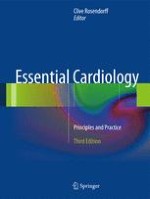Abstract
The advanced imaging technologies, cardiovascular computed tomography (using X-ray), and cardiovascular magnetic resonance (using magnetic and radio frequency or RF fields) generally provide more comprehensive and frequently unique clinical information compared with other technologies. They are not used routinely, but rather for specific indications. Since they are more technically advanced, they are more expensive and require additional knowledge for proper acquisition and interpretation. The strength of CCT resides in its ability to provide excellent imaging quality of the large- and medium-sized coronary arteries using IV-administered contrast medium. While CCT utilizes X-rays, the radiation dose is drastically decreasing with improving technology. The strengths of CMR are the ability to visualize morphology, function, perfusion, viability, and metabolism without ionizing radiation, although sometimes requiring IV gadolinium contrast agent. These two technologies have received relatively recent Nobel prizes (one for CT and three for MRI), and both continue to improve with the advent of new software and hardware. This chapter provides a background for most of the commonly employed applications of computed tomography and magnetic resonance imaging of the heart.
